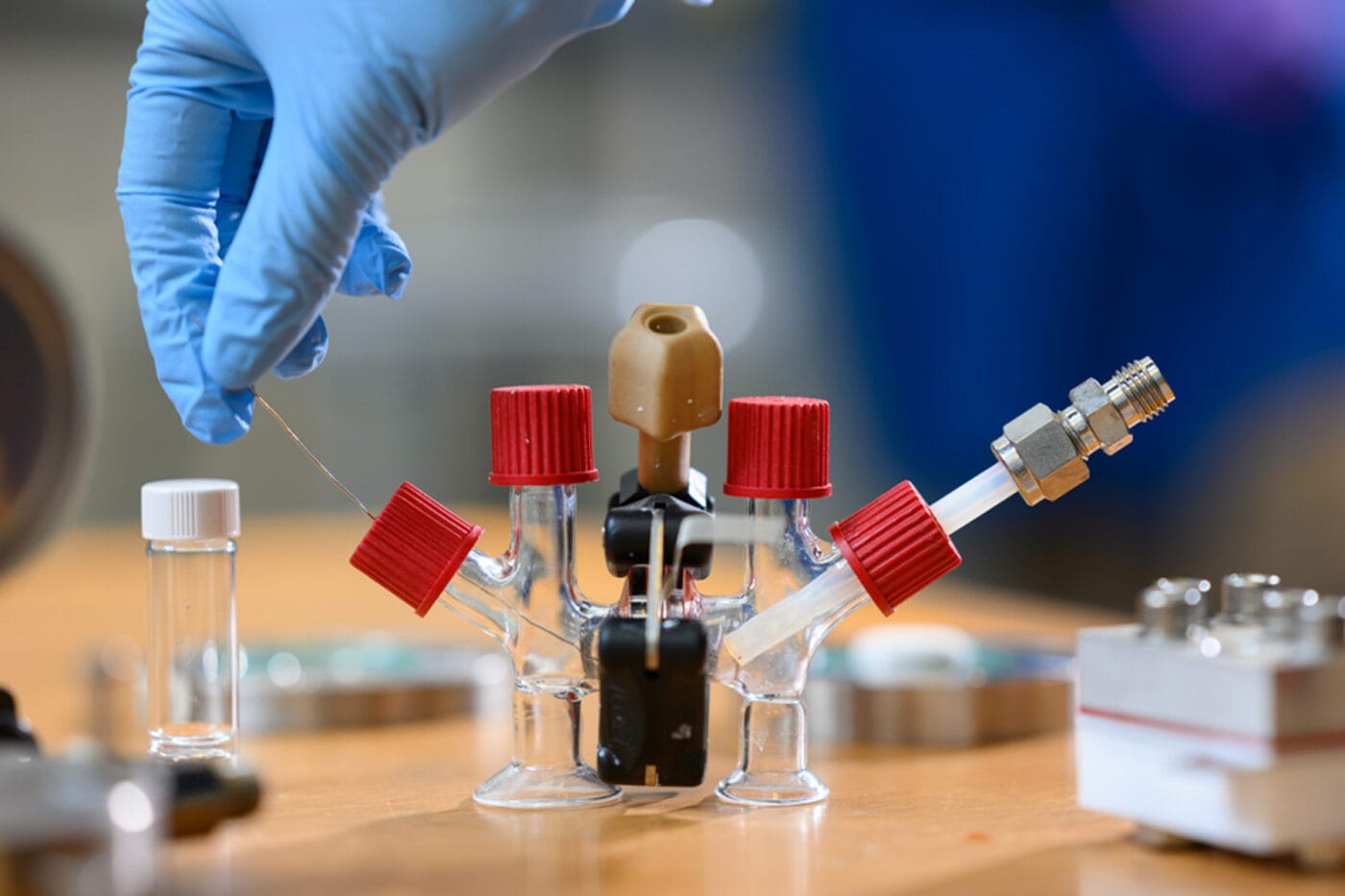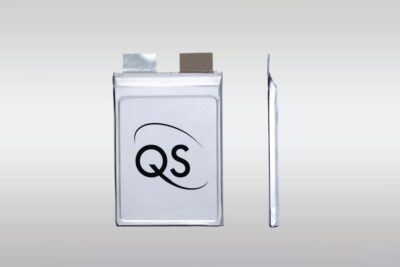MIT researchers create sodium fuel cell with high energy density
The new energy carrier relies on abundant sodium, such as sea salt, and works like a fuel cell. The cell is refuelled with liquid sodium at 98 degrees Celsius, the boiling point of water, rather than being recharged with electrons in a closed chemical system like batteries.
In this sodium fuel cell, one side contains sodium and the other contains ordinary air, which provides oxygen atoms. Dividing the two is a layer of solid ceramic material that serves as the electrolyte, allowing sodium ions to pass through. A porous air-facing electrode enables the sodium to chemically react with oxygen, producing electricity.
The researchers see their work as being most significant in the aviation sector, where battery weight has been a drawback to electric aircraft. “The threshold that you really need for realistic electric aviation is about 1,000 watt-hours per kilogram,” says one of the lead researchers, Professor of Materials Science and Engineering, Yet-Ming Chiang. “Today’s electric vehicle lithium-ion batteries top out at about 300 watt-hours per kilogram — nowhere near what’s needed. Even at 1,000 watt-hours per kilogram, he says, that wouldn’t be enough to enable transcontinental or trans-Atlantic flights.”
The energy density made possible by this fuel cell mirrors potential similar to hydrogen fuel cell aviation propulsion, which, while enabling longer flights than the short range enabled by lithium-ion batteries, is considered practical only for regional aviation, not intercontinental flight. MIT points out that this distance range “accounts for about 80 per cent of domestic flights and 30 per cent of the emissions from aviation.”
The researchers consider this technology as a possible enabler for other hard-to-decarbonise sectors such as trucking, marine and rail transportation. “They all require very high energy density, and they all require low cost,” points out Chiang. “And that’s what attracted us to sodium metal.”
The researchers found that the amount of humidity in the air was crucial to making the electrochemical reaction efficient, which resulted in the sodium producing its discharge products in liquid rather than solid form. This makes it much easier for discharge products to be removed by the flow of air through the system. “The key was that we can form this liquid discharge product and remove it easily, as opposed to the solid discharge that would form in dry conditions,” explained doctoral researcher Karen Sugano.
“We’re pulling from fuel cell research in terms of designing our electrode, we’re pulling from older high-temperature battery research as well as some nascent sodium-air battery research, and kind of mushing it together,” which led to the “the big bump in performance” the team has achieved, said Saahir Ganti-Agrawal, also a doctoral researcher within the team.
The sodium fuel cell produces emissions of sodium oxide. The researchers say that this would soak up carbon dioxide from the atmosphere. The emissions form a compound that “quickly combines with moisture in the air to make sodium hydroxide — a material commonly used as a drain cleaner — which readily combines with carbon dioxide to form a solid material, sodium carbonate, which in turn forms sodium bicarbonate, otherwise known as baking soda,” writes the technology institute about the break through.
“There’s this natural cascade of reactions that happens when you start with sodium metal,” Chiang says. “It’s all spontaneous. We don’t have to do anything to make it happen, we just have to fly the airplane.”
Sodium bicarbonate can neutralise acids, so the institute puts forward the thesis that the fuel cell’s chemical emissions could – potentially – contribute to the deacidification of the oceans. The press release announcing the breakthrough, recently published in Joule, highlights the fact that sodium is many times more abundant than lithium and far less expensive.
The researchers and the technology institute are backing the discovery further. The plan is to first produce a brick-sized fuel cell that can deliver about 1,000 watt-hours of energy. This energy density is enough to power a large drone, for which the team hopes to have a prototype for a practical demonstration ready within the next year.
Propel Aero, the company the researchers have founded to further develop the technology, is currently housed in MIT’s startup incubator, The Engine. Chiang said the fuel cell system should be quite straightforward to scale up to practical sizes for commercialisation.





0 Comments